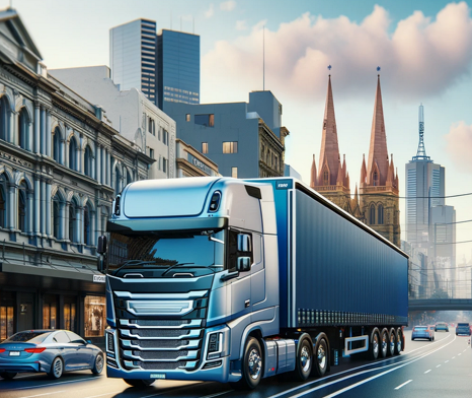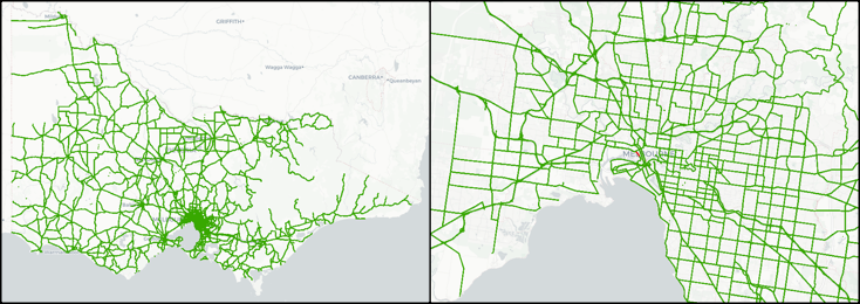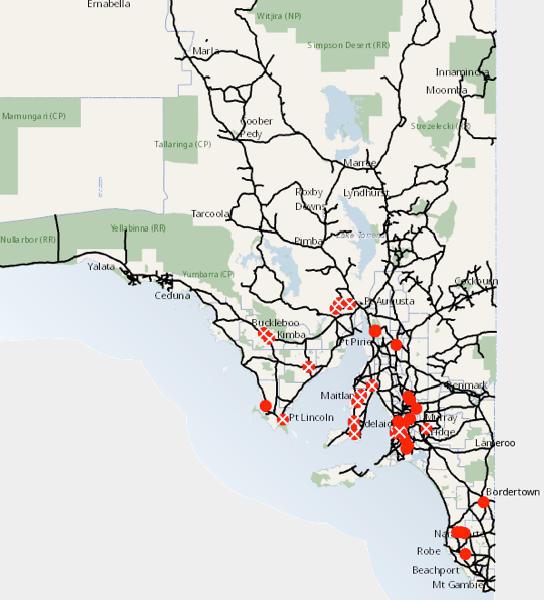Low and zero-emission heavy vehicle axle limits
These concessions are in response to the fact that these heavy vehicles are typically heavier from the additional mass of the technology involved. This move, by the relevant states, comes just after the nationwide acceptance of state-of-the-art 2.55-metre-wide prime movers. Similar steps have been taken internationally, with Europe allowing for 2 tonnes additional Gross Combination Mass on Zero-Emission Vehicles (ZEV) for combinations up to 25.25 metres in overall length.

Caption: A representation of a low and zero-emission heavy vehicle (AI generated)
Victoria
Victoria has emerged as a pioneering state in this domain. It’s the first in Australia to permanently remove one of the main barriers for heavy-duty electric trucks operating on local roads (i.e. not a trial). The Victorian government has sanctioned heavy-duty electric trucks to operate with a 7.5-tonne weight on the steer axle. This permission applies to specific roads, identified under a Low/Zero Emission Heavy Vehicle (LZEHV) access map. At this stage, only Volvo prime movers may use this concession, but more models are expected to be made available to their own respective networks soon. The Department of Transport and Planning is open to other OEM’s coming forward to develop their network. Ultimately, their intention is to align with other states towards a nation-wide consistency with concessions for these vehicles.

Caption: Victoria’s Volvo Semi-trailer LZEHV Pre-Approved Network
NSW
NSW is adopting a 2-year trial with more generous axle group loadings of 8.0 tonnes on a single steer axle and 18.5 tonnes on tandem drive axles, where the overall gross vehicle mass (GVM) cannot exceed 26 tonnes. This policy is in-line with Transport for NSW’s Towards Net Zero Emissions Freight Policy where a more extensive framework is revealed.
The specific travel routes and additional restrictions for these vehicles has not been developed as yet. Transport for NSW are currently working with the NHVR to develop a notice with an associated ZEV map. If access is required before this Notice is published, a permit may be applied for.
South Australia
Similar to NSW, South Australia has initiated a trial allowing trucks that exceed the current weight limit for heavy vehicles to traverse specified roads. The relevant operators in South Australia can apply for an exemption from the mass limits that apply to heavy vehicles on state roads. These vehicles can operate up to 7.5 tonnes on a single steer axle and 18.5 tonnes on tandem drive axles. The trial also includes monitoring the performance and compatibility of these vehicles with existing road infrastructure using telematics.
Networks are structured similar to that of PBS, per the table below.
For more details on this change, please visit the South Australia network maps for these vehicles.
| Combination length limit | Network name | Eligible combinations |
|---|---|---|
| L ≤ 20m | Low and zero emission heavy vehicle level 1A | Prime mover and semi-trailers |
| 20m ≤ L ≤ 26m | Low and zero emission heavy vehicle level 2A | B-double |
| 26m ≤ L ≤ 30m | Low and zero emission heavy vehicle level 2B | A-double, B-double |
| 30m ≤ L ≤ 36.5m | Low and zero emission heavy vehicle level 3A | A-double, B-double, AB-triple, BA-triple |
| 36.5m ≤ L ≤ 42m | Low and zero emission heavy vehicle level 3B | AB-triple, BA-triple |
| 42m ≤ L ≤ 53.5m | Low and zero emission heavy vehicle level 4A | A-triple, AB-triple, BA-triple, BAB-quad, ABB-quad |

Caption: South Australia’s pre-approved roads for low and zero emission heavy vehicles
The initiatives by Victoria, NSW, and South Australia represent a significant step towards a more sustainable future in heavy vehicle transportation. At present, QLD have not revealed their access for the intake of ZEV’s. Nonetheless, it is expected there will be nation-wide acceptance of these vehicles over time. As these efforts continue to evolve, Victoria, NSW, and South Australia set a precedent for other regions and countries to follow in the pursuit of a greener, more sustainable future in heavy vehicle transportation.
Contact Advantia if you would like to investigate PBS opportunities for your business.
Get more like this in your inbox
Subscribe to our Newsletter and never miss a post.